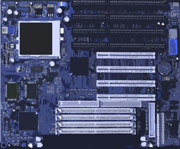Creating Animation
Animation is the rapid display of a sequence of 2D artwork or model positions in order to create an illusion of movement. This could be anything from a flipbook to a motion picture film.
Flipbooks - one of the earliest forms of animation
A flip book is a book of pages in which sequences of an animation are drawn, one at a time, on each page. When you flip the pages rapidly, the images seem to move, much as they would if filmed in sequences as cel animation is. Flip books are one of the most basic forms of animation, relying on the same principle of visual deception that fools the eye into thinking that a series of images, presented in swift enough sequence, will create the illusion of actual motion.
Flipbook Gangnam Style -vs- Psy Gangnam Style
https://www.youtube.com/watch?v=KlwPtIMSWyA
Stop Motion Films
Stop motion (also known as stop frame) is an animation technique to make inanimate objects appear to move on their own. The objects are moved in small increments between individually photographed frames, creating the illusion of movement when the series of frames is played as a continuous sequence. Dolls with movable joints or clay figures are often used in stop motion for their ease of repositioning. Stop motion animation using plasticine is called clay animation or "clay-mation" (for example Wallace and Gromit). The following clip shows some of the making of the film ParaNorman
ParaNorman : Hand - Making the World Featurette
https://www.youtube.com/watch?v=SjP2MD7QY08
Adobe Flash
Since its introduction in 1996, Flash technology has become a popular method for adding animation and interactivity to web pages. Flash is commonly used to create animation, advertisements, various web-page components, to integrate video into web pages, and more recently, to develop rich Internet applications.

